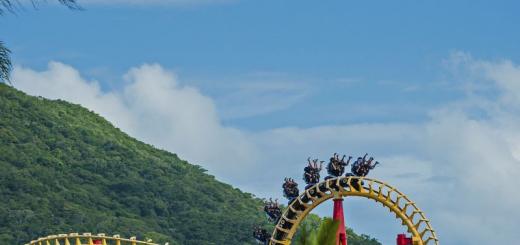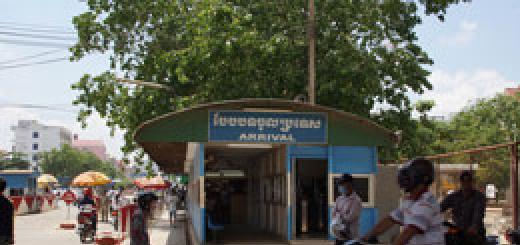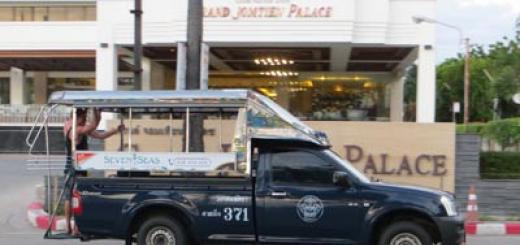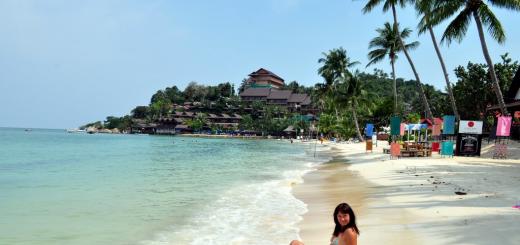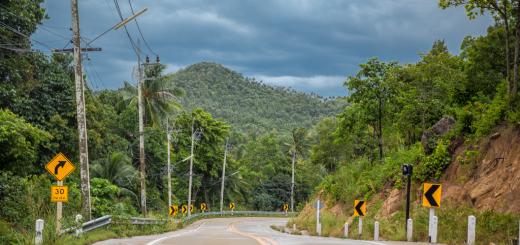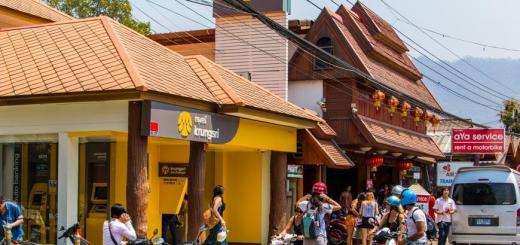(Azak city; Azov city, Rostov region)
The city of Azov is located on the banks of the Don, 7 km from its confluence with the Taganrog Bay of the Sea of Azov, 40 km southwest of.

In the X-XII centuries. in its place was a Slavic settlement, which was part of the ancient Russian Tmutarakan principality. In the XIII century. at this place, the city of Azak arose, which in translation from Turkic meant "the mouth of the river." In 1395 the city was destroyed by troops. Soon it was rebuilt, but already in 1471 it was captured by the Turks and turned into a military fortress. Over time, the Turkic name of the fortress was turned into Azau, which was perceived by the Russians as Azov.
As a result of the prohibition of European ships to enter the Black Sea and the opening of the sea route to India, trade in Azov fell into decline, and it turned into an insignificant Turkish fortress, the garrison of which waged a continuous struggle with the Don Cossacks.
Capture of Azov in 1637 by Zaporozhian and Don Cossacks
The self-willed Cossacks have played a very controversial role in Russian history. Sometimes they became irreconcilable enemies of power - as, for example, when many of them fought in alliance with the invaders of the Commonwealth. But when their interests coincided with those of Moscow, they were very useful allies.
Azov was then under the rule of the Turks, from there they raided the Don villages.
In 1637, detachments of Zaporozhye and Don Cossacks, after several months of siege, stormed the fortress of Azov, which at that time was considered impregnable. It was surrounded by deep ditches and high earthen ramparts. The walls of the fortress and 11 towers were made of stone. 200 cannons were installed on the fortress walls, and the garrison consisted of 4 thousand Janissaries. This victory of the Cossacks amazed the European states and caused indignation among the Turkish government. However, the Turks, busy with the war with Persia, got the opportunity to send their troops against the Cossacks only a few years later.
The political situation of that time forced the Moscow tsar to declare to the Turkish sultan that Moscow had nothing to do with the campaign of the Cossacks. That did not prevent the royal banner and state-owned weapons from being delivered to Azov. The first attempts of the Turks to recapture the fortress were unsuccessful.
"Azov seat"
One of the most probably famous episodes in the history of the Cossacks of the 17th century is the Azov siege seat (1641-1642).
In June 1641, the Turkish army of about 100 thousand people, supported by 700 guns and a strong fleet of 45 galleys and many small ships, surrounded Azov from land and sea. At that time, the garrison of the fortress under the command of Ataman Osip Petrov consisted of 6 thousand people (including about 800 women).
The Turks failed to take the fortifications of Azov by storm, and a multi-day siege of the fortress began, called in history the “Azov Seat”.
A long siege "according to all the rules", with the methodical destruction of the towers by artillery, also did not break the besieged. The garrison withstood 24 attacks of many times superior troops!
By October 1641, the situation of the besieged had noticeably worsened, and at dawn on October 4, the Cossacks decided to make a sortie with all their might in order to either break through the ranks of the besiegers or die in a fair fight.
But they did not have to resort to this extreme measure - the Turkish army retreated, and on January 3, 1642, a Zemsky Sobor was convened in Moscow to resolve the Azov issue, at which it became clear that the acceptance of Azov should entail a war with Turkey.
As a result, he sent a letter to the Cossacks, in which he advised them to leave the city. Having obeyed the sovereign, the Cossacks left Azov in May 1643, having previously destroyed all the fortifications and removed all supplies and artillery.
The returning Turks had to rebuild everything from the beginning.
Sasha Mitrahovich 19.12.2016 10:25

The struggle for the fortress of Azov, which blocked Russia's access to the Azov and Black Seas, unfolded during the so-called " Azov campaigns"(1695-1696).
For the first Azov campaign an army was formed from the best troops, consisting of about 31 thousand people, supported by 170 guns. On July 5, 1695, Russian troops approached Azov and, after a month-long siege, began to storm the fortress. All attempts ended in failure, one of the reasons for which was the lack of a blockade of Azov from the sea.
Heavy losses and the approaching autumn forced Peter I to lift the siege of the city. Failure did not break the will of the king. It was decided to act against Azov not only by ground forces, but also by the fleet, for which 2 battleships, 4 fire ships, 23 galleys, and a large number of small ships were built.
The first fortifications on the territory of the ancient city appeared at the beginning of the 15th century. During this time, the fortress belonged to the Sarmatians and Polovtsians, Tatars and Genoese, Turkish conquerors and Don Cossacks of the army of the Russian emperor.
History of the ancient fort
The first settlers on the site of modern Azov, the former Tanais, were the Meots in the 1st-2nd centuries. In the X century, the city was captured by the Russian prince Vladimir, but less than a hundred years later, the fortress passed to the Polovtsy. Then the settlement was named Azov (translated from the Turkic language - "the mouth of the river"). Then the Genoese took possession of it (then the Tana fortress appeared in the city), later the Tatars, and soon Turkish subjects.
In 1637, the Don Cossacks and Cossacks stormed the Turkish fort in order to gain access to the Black Sea.
In 1641, during the Azov siege, the Cossacks defended Azov from a huge Turkish army for more than three months, won, but left the fortress by royal decree.
In 1695-1696, the Russian Tsar Peter I undertook two campaigns against Azov. In 1696, Azov was taken by the Russian army and navy.
In the 18th century, fortifications began to be strengthened and rebuilt. Everything was reconstructed - from watchtowers to outbuildings. But in 1747, under the terms of the Belgrade peace with Turkey, the fort had to be destroyed. The next restoration work began two decades later by decree of Catherine II. Six years later, the fort became the administrative center of the new Azov province.
At the beginning of the 19th century, the fortress lost its military significance and was abolished in 1810. During the German occupation, many of the city's fortifications were badly damaged. Of the 12 gates on the ramparts, only Alekseevsky gates have been preserved.
The fortress after restoration
Today, the preserved parts of the fortifications tell about the history of the Azov fortress. In the 1960s, all buildings were restored. Soon the Azov Museum-Reserve, which opened here, met its first guests.
The exhibition in the powder magazine of the fortress is dedicated to the history of the Don Cossacks and the Azov campaigns of Peter I. And the diorama "The capture of the Turkish fortress of Azov by the troops of Peter I in 1696" tells in detail about the events of the late 17th century.
At the ramparts of the fortress there is a cross in memory of the Cossacks who died in the Sea of Azov. Authentic Polovtsian stone statues are placed on the mound model near the powder magazine. On the territory of the museum-reserve you can see preserved military weapons, for example, a Russian cannon of the 17th century, monuments and memorial plaques. The All-Russian festival of military-historical clubs is held here, dedicated to the Azov Seat of the Don Cossacks. Every year, more than 10,000 spectators take part in costume performances and military reenactments.
Mikhailushkin //Read. - 1998. - No. 49. – S. 23.More than 500 years ago, the Azov fortress was a tough nut to crack . And her ramparts are not a criminal defense(the story will be short and fluent). How many copies were brokento overcome an earthen ditch up to8 meters and climb 8 mi , and in some places on10 meter peak shaft . Thousands of armies of Russian soldiers, Turks , Crimean Tatars , Don Cossacks and many other peoples laid down their heads during the assaults on these ramparts. WITH 1475 Turkish Ottoman Empire founded this fortress. And they seemed that there is no such force in the worldwho could conquer them and drive them out of this fortress. And only at the end of the 15th century, the Don Cossacks announced themselves menacingly, as a force capable of defending its influence throughout the Don and the Sea of \u200b\u200bAzov. IN In 1637, after a two-month siege, the Don Cossacks captured Azov by storm and military cunning. And in 1642 , having not received support from the Moscow Tsar Mikhail Fedorovich Romanov, the Cossacks were forced to leave Azov. Having razed to the ground all its fortifications and burned down everything in the fortress, went to Cherkassk(now Starocherkassk). The Turks came and1672 restored all the fortifications. And again flared up at this time Russian- Turkish war . Azov remains under the rule of the Turks. IN 1696 in the second campaign to the young 24- x-year-old Russian Tsar Peter Alekseevich Romanov managed to take the Azov fortress. After the capture of the fortress, Peter I orders his best engineers to create the Azov fortress according to all the latest European models.. This is how a new Azov fortress is being built in a star-shaped plan with a deep moat and high earthen ramparts., extending from the mouth of r.Azovka to the modern Container Plant in 1km and 100 meters . A new territory expanded along the perimeter is added to the former old Turkish ramparts from the modern Lermontov Street to the mouth of the Azovka River(the so-called Alekseevsky suburb). What was the fortress like? 1475-1637. G . no one managed to find in the Soviet archives.
In 1711 the war with Turkey continues, and as a result of the unsuccessful Prut campaign, Peter I returned Azov and Taganrog to the Turks. Before leaving the fortress, all defensive structures were blown up. The Turks came to Azov again and restored everything in the fortress according to Peter's plan.
IN In 1736, during the reign of Anna Ivanovna, the Russian army again took Azov, however, under the Belgrade Treaty in 1739 Azov was demilitarized, i.e. all its fortifications were completely destroyed. The now preserved ramparts are an example of the military art of engineering military defensive fortifications in the 17th-18th centuries. According to the historical plans of the Petrine era, there were several powder magazines on the territory of the fortress. One (by the way, this is the only gunpowder magazine-monument in the entire North Caucasus) and one wall of the Geuz Gates (in the time of Peter the Great they were called the Lower Taganrog Gates) have survived. Unfortunately, the matter does not reach the preservation of these ancient monuments and their restoration.
P.S. And here is what the Don church chronicle preserved about the memory of the Don heroes after an almost 5-year siege sitting in the Azov fortress in 1637-1642.
In 1867, a rich brick chapel was built on the Monastyrsky tract (this is from Azov up the Don near the village of Starocherkassky), in front of the entrance there were cast-iron cannons taken out of Azov on cast-iron gun carriages. Every year at Shrovetide a prayer service was performed with military honors - a commemoration of the Cossacks who fell from the Turks. When laying the foundation of the chapel, a vessel with sacred oil was buried and. the entry: "To the glory of the Most Blessed God, His Most Holy Mother of God and Defender of Azov, St. John the Baptist, this monument was laid in honor and eternal glory of the Don heroes who conquered the Russian state in 1637 and defended it in 1641 from the thirty-thousandth Turkish army."
"Lord! Let there be a monument, this pledge of love of the entire Christ-loving Don army for their ancestors resting in God. Amen!"
Don Diocesan Gazette of 1890, pp. 251-253.
Address: Genuezskaya street. How to get there: located near the banks of the Don River.
Azov fortress it was once a powerful and impregnable citadel, which repeatedly repelled Turkish attacks and sieges. Now only ramparts and ruins remain from the outpost, which stood on the left bank of the Don River. They continue to preserve the greatness and former glory of the Azov fortress, telling visitors about the history of creation, repulsed attacks, Russian-Turkish wars.
History of the Azov citadel
First fortress originated on the banks of the Don in the XIII century - when the merchants of Genoa and Venice chose this area to build a shopping center - it was called Tana. At that time, the Mongol-Tatars dominated here, who built the city of Azak here earlier. In the XIV century, the city was destroyed by the Golden Horde hordes of Khan Tamerlane, and Tana also suffered. But the Venetians and Genoese were able to revive the trading post, which after a century and a half fell under the control of the Ottoman Empire. The then Grand Vizier Gedik Ahmed Pasha used the fortress as a base for military campaigns against the Muscovite state.
During the First Azov campaign, detachments of Don Cossacks under the leadership of Peter I captured the fortress - it was renamed Azov, significantly strengthening it. First of all, this concerned the fortress walls and ramparts, as a result of which the outpost turned into one of the most impregnable bastions on the Don. According to oral stories, the ramparts were strengthened exclusively by hand: the Cossacks brought the earth to the walls on their hats and hands.
Azov constantly became the center of confrontation during the Russian-Turkish wars. The Turks besieged the fortress several times, shelling the walls with powerful cannons. As a result, only three of all the towers have survived to this day. When the Russian garrison retreated from Azov, most of the buildings and towers were blown up. In the mid 1730s. The Azov fortress finally came under the rule of the Russian Empire.  Literally immediately, large-scale fortification works began here. First, the ramparts were rebuilt, then all the other buildings - towers, gates, utility buildings. Unfortunately, in the late 40's. In the 18th century, the fortress was destroyed again, as the outpost repeatedly passed from the Cossacks to the detachments of Peter's archers. The next revival of Azov began 20 years later - in 1769. The Cossacks were engaged in the restoration - by order of Catherine II. Six years later, the fortress turned into the administrative center of the new province - Azov.
Literally immediately, large-scale fortification works began here. First, the ramparts were rebuilt, then all the other buildings - towers, gates, utility buildings. Unfortunately, in the late 40's. In the 18th century, the fortress was destroyed again, as the outpost repeatedly passed from the Cossacks to the detachments of Peter's archers. The next revival of Azov began 20 years later - in 1769. The Cossacks were engaged in the restoration - by order of Catherine II. Six years later, the fortress turned into the administrative center of the new province - Azov.
In the early 1780s. the provincial administration was transferred to the city of Yekaterinoslav, so Azov officially received the status of a fortress. Later, the status changed again - to the township, which contributed to its inclusion in the Yekaterinoslav province. At the very end of the 19th century, the former fortress was annexed to the region of the Don Cossacks, after which Cossack administration was introduced in Azov.
Ruins and ramparts of the fortress
The ramparts, visible in the area of Genoese street, were built during the XIV-XVIII centuries. Turks, Cossacks and Russian troops took part in their construction. Shafts and walls are interconnected by gates, of which there were 11 units in the fortress earlier. In the mid 1930s. The Azov fortress was studied in detail by employees of the bureau for the protection of monuments of the city of Rostov. As a result, it was found that defensive structures in this place began to appear even before our era, during the campaigns of the Greeks and Illyrians.  Pylon walls made of stone, located parallel to each other, were also examined. Between them passed the end of the former earthen rampart, separating the stone pylons (the distance between them is three meters). It was found that the total length of the walls was almost 14 kilometers. The gates were built into the walls, which retained traces of facing stone. The height of the walls varied from 5 to 15 m, the width was also different: from 10 to 30 meters - at the base, from 5 to 15 m - tapering to the top. The surviving ramparts have their own names - in honor of the battles of Peter I, they are intersected by modern city streets.
Pylon walls made of stone, located parallel to each other, were also examined. Between them passed the end of the former earthen rampart, separating the stone pylons (the distance between them is three meters). It was found that the total length of the walls was almost 14 kilometers. The gates were built into the walls, which retained traces of facing stone. The height of the walls varied from 5 to 15 m, the width was also different: from 10 to 30 meters - at the base, from 5 to 15 m - tapering to the top. The surviving ramparts have their own names - in honor of the battles of Peter I, they are intersected by modern city streets.
Of the 11 gates, only those that were called Alekseevsky have been perfectly preserved. The main materials used in their construction were stone and brick. Interestingly, the gate was built only after the fortress was destroyed. At first they were performed with their wood, and then they were replaced with stone ones. The vault of the gate and the walls were covered with well-hewn stone. After archaeologists completed their study of the ramparts, the gates were restored and included in the list of monuments under federal protection.
Place of historical reconstruction
Guests and local residents of Azov are frequent visitors to the ramparts of the Azov fortress. Many are attracted by the legendary history of the outpost, others are trying to learn more about the structure itself. In addition, most visitors tend to explore the fortification and see the remnants of cannons that remained in the loopholes. For many years, Azov has been the venue for the festival dedicated to the historical reconstruction of events around the fortress, theatrical and military performances are its distinctive features.
On the territory of Russia you can find a huge number of fortresses of completely different eras. Many of them are preserved today in excellent condition, but there are also those that, unfortunately, have turned into ruins, and one can only guess how they really looked.
And on the coast of the Sea of \u200b\u200bAzov there are similar structures that are of interest to tourists and travelers who are fond of ancient history.
The article provides information about the most popular holiday destinations on the coast of this sea, each of which has its own interesting history. Also, after reading the article, you can learn about two interesting historical objects on the Sea of Azov - the fortresses of Azov and Arabat.
Stanitsa Dolzhanskaya
The Cossack village of Dolzhanskaya is a popular resort stretching at the very base of the Dolgaya Spit (the coast of the Sea of Azov). This settlement belongs to the Yeysk district, it is 236 km away from Krasnodar.
The village was founded in the middle of the 19th century by Cossack settlers who came from the Dnieper and live here to this day. Today, the population is just over 7,000 people.
Dolzhanskaya attracts vacationers with its wonderful steppe climate, magnificent healing mud and mineral springs. Shallow depths and constant winds attract kitesurfers and windsurfers here. And the service sector in the village of Dolzhanskaya is much cheaper than in the larger resorts of the Krasnodar Territory.
A relatively good budget place for a beach holiday is the Sea of \u200b\u200bAzov. "Dolzhanskaya fortress" - one of the good private hotels, located in this village on the coast of the Sea of Azov. This remarkable place is located on a picturesque, closing spacious area. Today, this territory has the status of a protected landscape monument.
Dolzhanskaya has been popular among young people in recent years. Every year, since 2001, the A-ZOV festival has been held here, gathering a huge number of lovers of electronic music and extreme sports on the spit.
Azov

Before proceeding to the description of the historical monument (Azov fortress), we will present a little information about the city of Azov.
On the site of the modern city, the first settlement was founded before our era by the Greeks. It was the city of Tanais. For thousands of years, different nations have sought to conquer it, as it was located in a very advantageous place: the intersection of the main trade routes of Asia and Europe. Huns, Sarmatians, Pechenegs and Khazars lived here.
In the hands of Prince Vladimir, the city ended up in the 10th century, and in 1067 it was conquered by the Polovtsy, and since then it has had its current name - Azov (translated from the Turkic "Azak" means "mouth of the river").
Since ancient times, Azov has been a bone of contention between the Ottoman and Russian empires. the remains of which are still preserved, were built by the Don Cossacks in 1641-1642, during the period of the Azov sitting. Azov became Russian after the bloody Russian-Turkish wars that took place in 1768-1774.
Now the fortress of the XIV century, or rather its fragments, is one of the most attractive attractions not only for local residents, but also for tourists.

Azov fortress: description
Now there is practically nothing left of that ancient Azov fortress, only the Alekseevsky gates and the ramparts. The former have been recently restored and attract many tourists. The place is very quiet and picturesque. The ramparts stretched for hundreds of meters. Their width is from 5 to 30 meters. The remains of the brick walls are preserved on the crests of the ramparts, and at their base are the Alekseevsky Gates. A reminder of the formidable historical events that took place in these places centuries ago are the barrels of ancient cannons protruding menacingly from the loopholes. The Azov Fortress, together with the Alekseevsky Gates, is located near the old fish factory on Genuezskaya Street.
The very first thorough study of this historic building took place during the excavations carried out in 1935.
Fortress on the Azov coast of Crimea
There is another interesting object on the coast of the Sea of Azov (Crimea) - the Tatar-Turkish fortress, which is the only one on the peninsula. It is located two kilometers northwest of the village of Ak-Monai (the modern name is Kamenskoye). This fortification, together with the Yeni-Kale and Perekop fortresses, protected the Crimea from enemy attacks from the east and north.
The fortress, which has an octagonal shape, is surrounded by a deep moat along the perimeter; it is possible that it was connected to the Sea of Azov through an underground passage.
Description

Compared with the Azov fortress and others, Arabatskaya is one of the most interesting and mysterious. Of particular note is the design of the building. The main fundamental point in the construction of fortifications in the Middle Ages was the moat in front of the fortress and the earthen rampart following it. In this case, the moat was filled with water from the Sea of Azov and through specially laid channels. The entrance to the Arabat fortress, located on the side, was blocked by powerful gates. The remaining directions were protected by walls with several rows of loopholes and guns installed in them. All this made it possible to hold a circular defense for a long time.
The mysteriousness of the fortress lies in the fact that almost no documentary information has been preserved about it, and detailed scientific studies of the structure have also not been carried out.
The fortress, which was a silent witness to the tragic and turbulent events, still keeps many secrets.
Conclusion

Picturesque views of the Don River delta from the ramparts of the Azov fortress. Construction address: Rostov region, city of Azov, st. Genoese.
Every year, the All-Russian Festival of Military Historical Clubs is held on its territory. It is dedicated to the Azov siege seat of the Don Cossacks in 1641. More than 10,000 spectators come to this site to participate in costumed military performances or simply admire this colorful spectacle.

